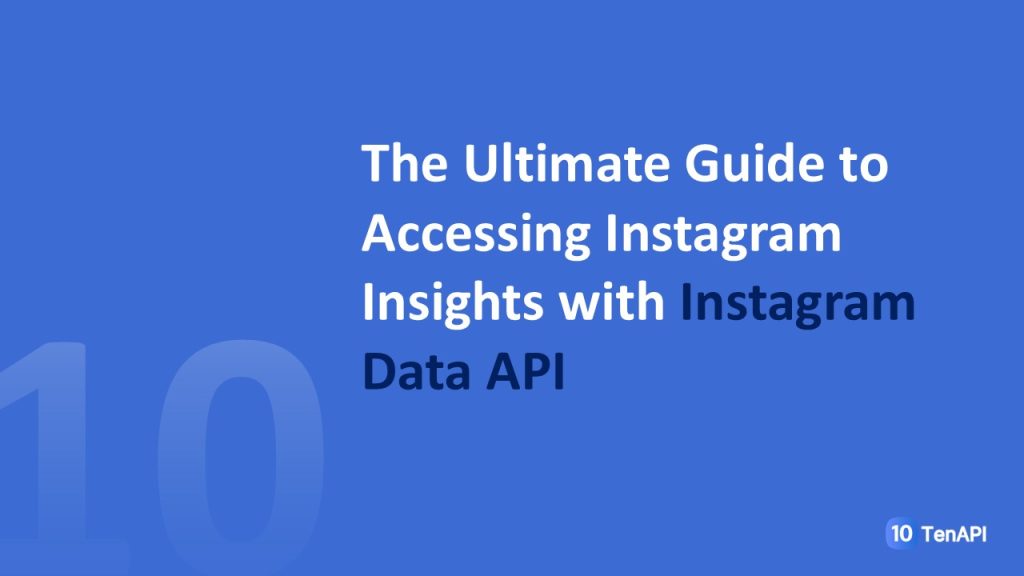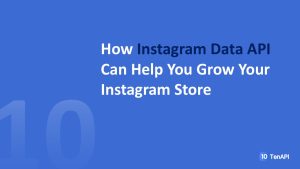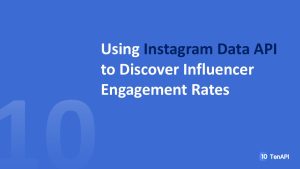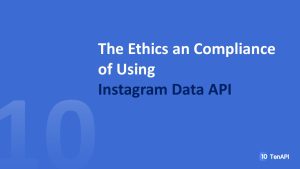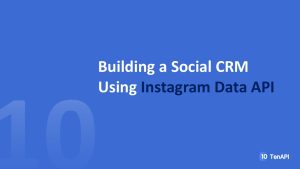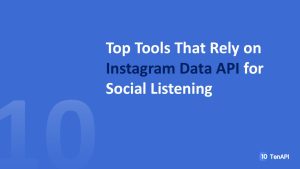If you’re a marketer, business owner, or content creator, you know how crucial Instagram insights are to growing your brand and engaging your audience. But what if you could go beyond Instagram’s built-in analytics and tap directly into the raw data? That’s exactly what the Instagram Data API offers—a powerful way to access, analyze, and optimize your Instagram performance with precision.
In this ultimate guide, we’ll walk you through everything you need to know about accessing Instagram Insights using the Instagram Data API—from what it is, how to set it up, what kind of data you can get, to best practices and real-world use cases. Ready? Let’s dive in!
Introduction to Instagram Insights
What Are Instagram Insights?
Instagram Insights is the native analytics tool within Instagram that provides valuable metrics about your followers, posts, stories, and overall account performance. These insights help you understand who your audience is, what content they engage with, and how your profile is growing over time.
Why Instagram Insights Matter for Businesses and Creators
Insights empower businesses and creators to make data-driven decisions. Instead of guessing what works, you get real feedback—like which posts hit the mark or which stories drive engagement. This means better content, smarter marketing, and ultimately more growth.
Understanding Instagram Data API
What Is the Instagram Data API?
The Instagram Data API is an interface provided by Facebook (Instagram’s parent company) that lets developers programmatically access Instagram data, including insights, metrics, and user information, in a structured way. This is essential for building custom analytics tools, dashboards, or integrating Instagram data with other systems.
Differences Between Instagram Graph API and Instagram Basic Display API
There are two main APIs:
-
Instagram Basic Display API: Mainly used to access basic profile info and media for personal accounts. No insights or advanced metrics.
-
Instagram Graph API: Designed for business and creator accounts, providing access to insights, metrics, and more detailed data.
For insights, you’ll need to use the Instagram Graph API.
Requirements to Access Instagram Data API
-
A Facebook Developer account
-
An Instagram Business or Creator account linked to a Facebook Page
-
Facebook App set up with required permissions
-
Access tokens with the necessary scopes
Setting Up Access to Instagram Data API
Creating a Facebook Developer Account
First things first—head over to the Facebook Developers site and sign up. It’s free and straightforward.
Setting Up an App in Facebook Developer Console
Create a new app inside the developer console. This app will serve as the gateway to interact with Instagram’s API. You’ll need to configure Instagram Basic Display or Graph API products here.
Linking Your Instagram Business or Creator Account
Make sure your Instagram account is converted to a Business or Creator type and linked to a Facebook Page. This linkage is essential for API access.
Generating Access Tokens
Once everything is set up, generate access tokens that authenticate your app to make API calls on behalf of your Instagram account. Tokens come with expiry times, so managing them properly is crucial.
Key Instagram Insights Available Through the API
Audience Demographics and Growth
Find out the age, gender, location, and follower growth trends of your audience. This helps tailor your content for better engagement.
Post Performance Metrics (Likes, Comments, Reach)
Get detailed stats on individual posts, including likes, comments, impressions, reach, and saves.
Stories Insights
Measure how your stories are performing—number of views, exits, replies, and navigation data.
Video and IGTV Analytics
Analyze video views, average watch time, and engagement on your video content.
Engagement Metrics Explained
Understand metrics like engagement rate, impressions vs. reach, and more to measure true content effectiveness.
How to Query Instagram Insights Using the API
Basic API Request Structure
Most API calls are GET requests to specific endpoints. For example, to get insights about a media post, you might call:
GET /{ig-media-id}/insights?metric=impressions,reach,engagement
Using Endpoints for Insights Data
Key endpoints include:
-
/mefor profile info -
/me/mediafor media lists -
/media-id/insightsfor media-specific insights -
/user-id/insightsfor account-level insights
Common Parameters and Filters
You can filter data by date ranges, metric types, and granularity to customize the insights you pull.
Best Practices for Using Instagram Data API
Handling Rate Limits and Pagination
The API enforces rate limits—don’t overwhelm it with too many requests. Use pagination to handle large data sets gracefully.
Securing Your API Tokens
Never expose your tokens publicly. Store them securely and refresh them before expiry.
Automating Data Collection
Use cron jobs or scheduled scripts to automate fetching insights regularly, enabling continuous monitoring.
Common Challenges and How to Overcome Them
Permissions and Access Issues
If your API calls fail, double-check your app permissions, token scopes, and that your Instagram account is properly linked.
API Changes and Updates
Facebook frequently updates APIs. Stay informed via their developer blog to adapt your integration accordingly.
Troubleshooting Common Errors
Error codes can be cryptic. Use Facebook’s API error documentation and community forums to diagnose and fix issues.
Tools and Libraries to Simplify API Integration
Popular SDKs and Wrappers
SDKs in Python, JavaScript, PHP, and others can save you time and handle complex API interactions.
Third-Party Platforms Offering Instagram Insights Access
If coding isn’t your thing, platforms like Hootsuite, Sprout Social, or Iconosquare provide API-powered insights with user-friendly interfaces.
Practical Use Cases for Instagram Data API
Creating Custom Analytics Dashboards
Build dashboards tailored to your unique KPIs, combining Instagram data with other marketing metrics.
Automating Social Media Reports
Set up automated reports that pull the latest Instagram insights and email them to your team weekly.
Enhancing Marketing Campaigns with Data-Driven Decisions
Use detailed data to optimize content timing, hashtags, and targeting, ensuring your campaigns hit the bullseye.
Future of Instagram Insights and API Developments
Upcoming Features and Updates
Facebook is constantly evolving the Instagram API—expect more granular insights, better video metrics, and possibly AI-powered analytics.
How AI and Machine Learning May Impact Insights
Imagine your tools predicting trends or automatically suggesting content strategies based on deep learning—this could be the future.
Conclusion
Accessing Instagram Insights via the Instagram Data API unlocks a treasure trove of data that can transform how you understand and grow your Instagram presence. While the setup may seem technical at first, the benefits of custom, automated, and detailed insights make it worth the effort. So why wait? Start exploring the Instagram Data API today and take your Instagram strategy to the next level!
FAQs
Q1: What permissions are needed for accessing Instagram Insights via API?
You need the instagram_basic and instagram_manage_insights permissions granted via Facebook App Review.
Q2: Can I access data from personal Instagram accounts?
No, only Business and Creator accounts linked to Facebook Pages can access insights via the API.
Q3: How often can I call the Instagram Insights API?
There are rate limits—generally a few hundred calls per hour—check Facebook’s documentation for exact numbers.
Q4: Is there a cost associated with using the Instagram Data API?
Using the API is free, but you must comply with Facebook’s terms and may incur costs if using third-party tools.
Q5: Can I access historical data through the Instagram Insights API?
You can access data for posts and stories created while your account was connected and authorized, but retroactive historical data is limited.

